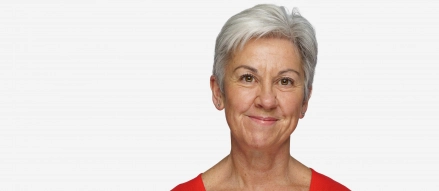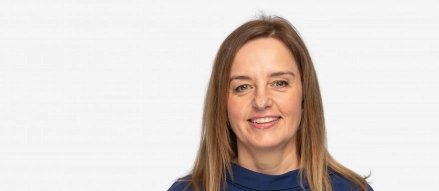The significant increase in inflation rates means many are likely to have substantially larger Annual Allowance tax charges for the 2022/23 tax year. This has implications for practices, which include;
- Tax reserves that need to be set aside within the practice or from partners drawings
- Impacts on workforce planning if GPs decide to change sessions or reduce commitment to other work
- A direct impact on practice manager partners who are also caught by this issue.
The Annual Allowance – the background
Broadly speaking, the Annual Allowance (AA) sets a limit on the pension growth that can be achieved each tax-year. The AA is £40,000 but can be tapered to a lower amount of £4,000 for high earners*. If available, unused AA from the previous three tax years can be “carried forward” to offset excess growth. Where the allowance is exceeded and there is no carry forward available, a tax charge will arise at your marginal rate of income tax.
* The AA starts to be tapered for those with a ‘threshold income’ of £200,000, and an ‘adjusted income’ of £240,000.
What impact do Consumer Prices Index (CPI) rates have on my NHS Pension growth?
It is important to understand two key concepts:
- For GPs and Practice Manager partners who are active pension members, your existing pension benefits increase each year by CPI + 1.5% (in addition to the pension accrual you have in that year).
- The growth in the NHS Pension scheme is calculated as the difference between the benefits at the beginning and end of the tax year. The mechanism used to calculate growth allows for inflation by increasing the opening figure by CPI.
So, you can see that inflation affects the partners pension benefits in two ways. However, importantly, the actual increases to the pension are based on the CPI figure from the September of the relevant tax year, whereas the uplifting of the opening value (for AA purposes) uses the previous tax year’s CPI figure.
This difference in the CPI rates used means that in times of rising inflation, your pension benefits can grow significantly, and the AA calculation does not fully allow for the higher inflation. This leads to significant pension growth figures and therefore the risk of sizeable AA tax charges.
For example, for the 2021/22 tax year, CPI was 3.1%, whereas the previous year’s figure was 0.5%. As such, when allowing for CPI + 1.5%, existing pension benefits will have grown by 4.6% but the AA calculation only allows for 0.5%.
In the 12 months to the end of June 2022, CPI was 9.4%, meaning the problem for 2022/23 tax-year will be even more severe and will result in many exceeding their AA, including those who may not have issues previously. This may include Salaried GP’s as well. Practices need to prepare for this and understand their options.
How do partners find out their Annual Allowance usage?
The AA usage for the current and previous three tax years is detailed in an AA Pensions Savings Statement (AAPSS). They should automatically be provided with an AAPSS where your total input exceeds the standard AA of £40,000, however, if their pension record is not up to date then NHS Pensions may not have the information with which to produce one.
They won’t automatically receive an AAPSS if pension growth is below £40,000 (despite potentially being subject to a tax charge if AA is tapered) but you can request one by contacting the NHS Pension Scheme directly.
AAPSSs are produced in arrears and will not typically be released until the calendar year following the end of the tax year (i.e., for 2020/21, the AAPSS will be provided in 2022).
Paying Annual Allowance charges
There are generally two options available for paying AA tax charges:
- Either directly via self-assessment tax return; or
- by using a ‘Scheme Pays Election’ via the NHS Pension Scheme. This is where the scheme pays any tax charge, with the balance (which is subject to interest) converted to a reduction in your income at the point of retirement.
Alternatively, where permitted, it is possible to use a private pension arrangement to pay tax charges accrued in the NHS Pension Scheme. This is known as a ‘voluntary’ Scheme Pays Election and is simply made as a deduction from the fund.
The Lifetime Allowance (LTA)
The LTA sets a limit on the pension which can be accrued over your life, and where this is exceeded, a tax charge is payable. For NHS Pension benefits, the charge is based on 25% of any excess of the LTA which is converted into a reduction to income at retirement.
The LTA is currently frozen at c. £1.073m and will remain at this level until 2026, having previously been aligned with CPI increases.
The impact of higher CPI figures whilst the LTA remains static will naturally exacerbate LTA issues for some NHS Pension Scheme members.
What can be done to mitigate the impact of Annual Allowance & LTA charges?
Clearly, there is nothing which can be done about CPI rates, and any flexibility is limited to changes to pensionable earnings or level of membership. Partners could reduce sessions, or alternatively, consider opting out of the scheme on a temporary or permanent basis.
However, it should be remembered that the NHS Pension scheme will provide a guaranteed and, crucially, inflation-linked retirement income. Reducing accrual via any of these options may alleviate the impact of AA and LTA charges but will ultimately result in GPs having a lower retirement income. Furthermore, reducing earnings or opting out will reduce the level of protection that the scheme provides in the event of death or ill-health.
Ultimately, any decisions taken in this area should prioritise partners long-term financial objectives, rather than simply mitigating short-term tax charges.
Keeping up to date
It is important that partners and salaried GP’s have up to date pension records and that all Type 1 (Partners) and Type 2 (salaried GP’s) pension returns have been submitted and processed. Where gaps are missing in pension records then returns may need to be resubmitted for those periods. If records are not updated in a timely manner this will delay the issuing of the AAPSS statement.
How Mazars can help
The NHS pension and the interaction with pension taxation is complex. Our specialised Healthcare team, which incorporates tax and financial planning, deal with the affairs of medical professionals in England, Wales, and Scotland.
We can provide you with information, estimates and analysis to enable you to make informed decisions in respect of your NHS Pension and paying AA tax charges. Not limited to this area, we can provide analysis and cash-flow planning which will help you plan for the future.
If you would like to get in touch with a member of our team to discuss further, please click the button below.
Contact us today






